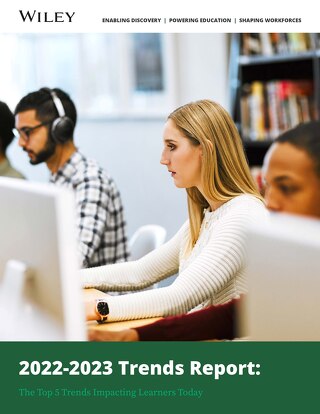4-ways-to-rethink-education-to-prepare-the-future-workforce
May 13, 2019
There’s a growing disconnect between what students learn in college and what employers expect from their new hires. And while 96% of chief academic officers believe their institutions are very or somewhat effective at preparing students for the workforce, only 11% of business leaders agree.
At a recent conference hosted by Deloitte’s Center for Higher Education Excellence, administrators and professors talked about the education and industry skills gap. They offered the following ways we can rethink education to better prepare students for the changing workforce:
1. Emphasize Soft Skills
Research shows that 85% of job success comes from having well-developed “soft skills” or people skills, while only 15% of long-term career success is attributed to technical skills and knowledge, or what is referred to as “hard skills.” The hard skills on your resume are what get you hired, but it’s the soft skills that help you advance your career.
Today’s recruiters and hiring managers value higher-order soft skills like critical thinking, communication, empathy, emotional intelligence, and teamwork. And although these skills can’t be easily tested in college and are even more difficult to teach in an online course, schools like UMass Dartmouth are taking the lead by integrating empathy across the curriculum so that their students can apply this human skill in real-world professional situations.
2. Prepare Students for Continuous Learning
The traditional college experience where students attend for four years and then go on to find a job worked when people had shorter life expectancies and committed to one employer for an entire lifetime. But today, learning doesn’t end at graduation, given the frequency with which most U.S. workers change jobs or career paths and how quickly business models and industries shift.
Jeff Schwartz, Principle and Deloitte Future of Work lead from Deloitte Consulting, says, “Work is changing, and the workforce is changing. Every job is going to be redesigned in five to seven years at a pace of change like we’ve never experienced.”
To keep up with this rate of change, we need to reimagine a college education that is continuous—one where students have multiple opportunities to develop both soft and technical skills throughout their lifetime. A flexible learning model that combines formal learning and work experience lets students access knowledge, skills, and a marketplace of credentials when they need them.
3. Incorporate Digitally-Enabled Student Services
Although we live in a hyperconnected world, we often don’t have the right conversations between business leaders, parents, students, and college administrators. Many students come from communities that don’t offer insight into what opportunities are out there, current needs in the workplace, or what the future may hold.
Technology connects students with peers, professors, and mentors—expanding their social networks, which in effect has a profound impact on career choices and opportunities. Especially beneficial to those learners with part-time jobs or families, online resources let students virtually “meet” with college advisors and counselors, access library services, and register for courses. By creating more flexible, human-oriented school environments, we give students the tools they need to get an education that fits their lifestyle.
4. Offer Diverse Learning Pathways
Not every student is the same, which is why higher education should be tailored to specific needs and desired outcomes. Dr. Marni Baker Stein, Provost of Western Governors University, relates this approach to the game, Lite-Brite. “Everyone has the same blackboard or skills map, but institutions will choose to use different colored light pegs to design their pathways,” she explains.
With the right leadership and models in place, schools can design various pathways for students (i.e., the Ivy League pathway, state school pathway, certificate-based pathway), different types of credentials, and lifelong learning platforms. Offering more choices helps students keep up with the workforce’s rapidly changing demands, seeing as an overwhelming 72% of people with a postgraduate degree say their primary motive for going to college in the first place was to get a good job.
Unfortunately, entry-level job descriptions often fail to include soft skills such as critical thinking which candidates need to do a job well This problem is compounded by employers’ fear of hiring the wrong recent graduate right out of the gate. Now more than ever, it’s critical to equip college and university students with the tools, credentials, and learning pathways they need to land a job that will set them on the path to success.
Read more about the future of American higher education here.








